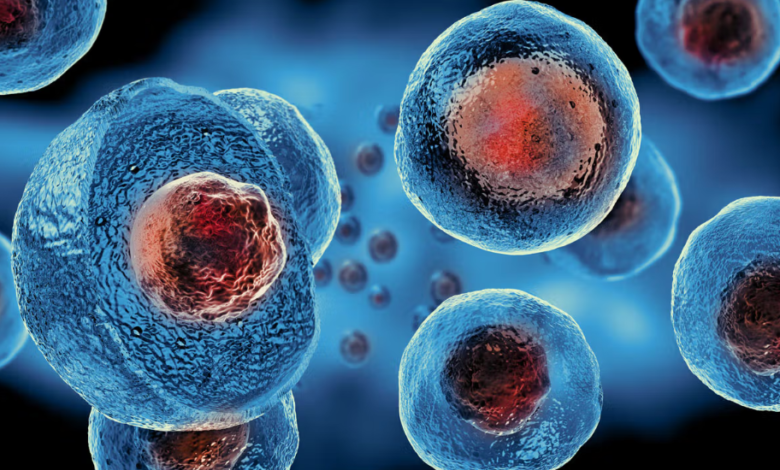The Evolution of Cell Line Development and Its Impact on Biotechnology

The intricate dance of life, at its most fundamental level, unfolds within the cell. For decades, scientists have sought to understand and manipulate these microscopic powerhouses for therapeutic, diagnostic, and research purposes. This quest has driven the remarkable evolution of cell line development – a cornerstone of modern biotechnology. From the early, often painstaking efforts to cultivate cells in vitro to today’s sophisticated engineering techniques, the journey has been transformative, profoundly impacting drug discovery, vaccine production, and our understanding of human disease. This article delves into this fascinating evolution, exploring its milestones, challenges, and the immense potential it continues to unlock.
From Primary Cells to Immortalized Lines: A Historical Perspective
The initial foray into cell culture began with primary cells, directly isolated from tissues. While invaluable for studying immediate cellular responses, their limited lifespan and inherent heterogeneity presented significant hurdles for consistent, large-scale research. The breakthrough came with the advent of immortalized cell lines – cells that can proliferate indefinitely under controlled conditions.
One of the earliest and most impactful immortalized lines was HeLa, established in 1951. Its continuous growth provided an unprecedented tool for virology, cancer research, and genetic studies. However, the ethical considerations surrounding its origin, and the realization that HeLa cells could contaminate other cultures, highlighted the need for more diverse and well-characterized cell lines. The subsequent decades saw the establishment of numerous other immortalized lines, often derived from human cancers or through viral transformation, each offering unique characteristics suitable for specific research applications.
The Dawn of Modern Cell Line Engineering
The true revolution in cell line development accelerated with the advent of recombinant DNA technology. This allowed scientists to introduce specific genes into cells, enabling them to produce therapeutic proteins, such as insulin and monoclonal antibodies, on a commercial scale. This era marked a shift from simply growing cells to actively engineering them for desired functions.
Advancements in Gene Editing Technologies
The 21st century brought forth an even more powerful arsenal of tools, with CRISPR-Cas9 leading the charge in gene editing. Technologies like CRISPR have democratized cell line engineering, making precise genetic modifications – from single-nucleotide changes to large genomic rearrangements – more accessible and efficient than ever before. This precision allows for:
- Creation of disease models: Researchers can introduce specific mutations linked to human diseases into cell lines, providing accurate in vitro models for studying disease mechanisms and testing potential therapies.
- Optimization of protein production: Gene editing can enhance the expression of target proteins, improve their post-translational modifications, and even remove undesirable host cell proteins, leading to higher yields and purer therapeutic products.
- Development of reporter cell lines: Cell lines can be engineered to express fluorescent proteins or other reporters in response to specific stimuli, enabling high-throughput screening for drug candidates.
The Role of Specific Cell Lines in Biotechnology
The diversity of available cell lines is crucial for addressing the multifaceted challenges in biotechnology. Each line possesses unique biological properties that make it suitable for particular applications. For instance, Chinese Hamster Ovary (CHO) cells are the workhorses of biopharmaceutical production due to their robust growth, high protein expression capabilities, and ability to perform human-like glycosylation.
In liver research and drug metabolism studies, the HepG2 cell line stands out. Derived from a human hepatocellular carcinoma, HepG2 cells retain many characteristics of normal hepatocytes, including the expression of various drug-metabolizing enzymes and bile acid transporters. This makes HepG2 an invaluable model for:
- Drug metabolism and toxicity screening: Assessing how new drug candidates are metabolized by the liver and identifying potential toxic effects.
- Hepatitis virus research: Studying the life cycle of hepatitis viruses and testing antiviral compounds.
- Nutritional studies: Investigating the impact of diet and supplements on liver function.
The ability to consistently cultivate and manipulate cell lines like HepG2 has dramatically accelerated research and development across various fields.
See also: Mastering Healthcare Charge Capture for Revenue Integrity and Compliance
Challenges and Future Directions in Cell Line Development
Despite the remarkable progress, cell line development continues to face challenges. These include:
- Cell line authentication: Misidentification and cross-contamination remain significant issues, underscoring the critical need for rigorous authentication protocols, such as STR profiling.
- Scalability and cost: Producing therapeutic proteins or cell-based therapies on a large scale requires optimizing cell culture conditions and reducing production costs.
- Physiological relevance: While immortalized cell lines are powerful tools, they sometimes lack the full physiological complexity of primary tissues. Advances in induced pluripotent stem cells (iPSCs) and organoids are addressing this by allowing the creation of more physiologically relevant models.
Looking ahead, the future of cell line development is bright. The integration of artificial intelligence and machine learning promises to optimize cell culture conditions and predict optimal genetic modifications. Automation and high-throughput screening platforms will further accelerate discovery. Furthermore, the burgeoning field of synthetic biology aims to design and build novel cellular systems from the ground up, offering unprecedented control over cellular function.
Actionable Insights for Researchers
For researchers leveraging cell lines in their work, several key insights can enhance the quality and reliability of their experiments:
- Always authenticate your cell lines: This single step can prevent costly errors and ensure the reproducibility of your results. Many commercial services offer STR profiling for human cell lines.
- Understand your cell line’s characteristics: Familiarize yourself with the origin, passage number, growth characteristics, and specific functional properties of the cell line you are using, especially for specialized lines like HepG2.
- Optimize culture conditions: Small variations in media, serum, CO2, and temperature can significantly impact cell growth and function. Experiment to find the optimal conditions for your specific application.
- Embrace new technologies: Stay informed about advancements in gene editing, 3D cell culture, and organoid technology, as these can offer more physiologically relevant models and powerful experimental tools.
Conclusion
The evolution of cell line development represents a testament to scientific ingenuity and perseverance. From simple cultures to intricately engineered biological factories, these cellular tools have become indispensable in understanding disease, developing life-saving therapies, and pushing the boundaries of biotechnology. As we continue to refine our ability to manipulate and understand these microscopic marvels, the impact on human health and scientific discovery will only continue to grow, promising a future where cellular engineering plays an even more central role in addressing some of the world’s most pressing challenges.




